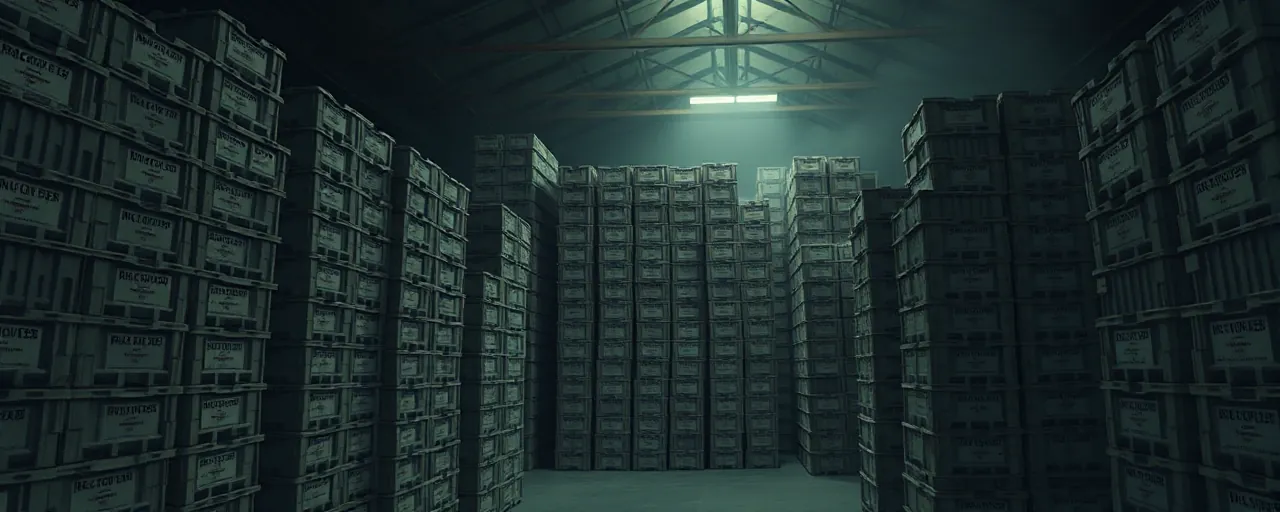A Staggering Penalty in Brooklyn
A federal judge in Brooklyn handed down a striking sentence today, April 9, 2025, ordering Dr. John Waldrop of Cataula, Georgia, to pay a $900,000 fine for illegally trafficking protected birds and eggs into the United States. The penalty ranks among the largest ever in a case tied to the Endangered Species Act, a law designed to shield vulnerable wildlife from exploitation. Waldrop’s co-defendant, Toney Jones of Eufala, Alabama, received six months of probation, a lighter consequence for his role in the scheme. The ruling came after both men pleaded guilty to charges last year, exposing a sprawling operation that stretched across continents.
The case hit hard for its sheer scale. Waldrop’s collection, forfeited to authorities, included 1,401 taxidermy bird mounts and 2,594 eggs, featuring species like the Nordmann’s Greenshank, an Asian shorebird so rare that only 900 to 1,600 remain in the wild. No North American museum even holds its eggs. Federal officials called it one of the biggest bird trafficking busts in history, a wake-up call to the hidden networks profiting off nature’s rarities. For readers new to this world, it’s a glimpse into how laws, science, and crime collide over creatures most people only see in books.
Unpacking the Operation
Court records paint a vivid picture of Waldrop’s methods. Between 2016 and 2020, he imported birds and eggs without permits or declarations, dodging requirements set by the Endangered Species Act and international agreements like the Convention on International Trade in Endangered Species, or CITES. When U.S. Fish and Wildlife Service inspectors started intercepting shipments at places like John F. Kennedy International Airport, Waldrop didn’t back off. Instead, he roped in Jones, a worker on his Georgia farm, to receive packages and funnel $525,000 through a bank account to mask the payments. The duo scoured online marketplaces, snapping up specimens from countries as far-flung as Iceland, South Africa, and Russia.
The investigation, dubbed Operation Final Flight, leaned on forensic science to crack the case wide open. Experts at the National Fish and Wildlife Forensics Lab cataloged the haul, confirming its record-breaking size. Photos from the sentencing memo show a freshly killed Roseate Spoonbill next to its mounted counterpart, a stark reminder of the toll on living creatures. For everyday people, it’s a jarring look at how eBay and Etsy, sites they might use for crafts or vintage finds, became pipelines for an illegal trade that’s growing faster than anyone expected.
A Global Trade Under Scrutiny
Wildlife trafficking isn’t new, but its reach keeps expanding. Experts estimate it’s a $20 billion-a-year industry, touching over 4,000 species across 162 countries. Laws like the Endangered Species Act, enacted in 1973, and CITES, launched the same year, aim to choke off that flow by regulating trade and punishing violators. Successes exist, bald eagles soaring again over American skies stand as proof. Yet, enforcement often lags. Only a fraction of violations face prosecution, and penalties rarely match the profits. Waldrop’s fine, hefty as it is, sparks debate, is it enough to deter others when rare eggs can fetch thousands on the black market?
Online platforms have turbocharged the problem. A 2021 study found 1,200 ads for protected species on U.S. digital sites in just six weeks, a trend that exploded during the pandemic. Traffickers adapt fast, using encrypted chats to stay ahead of the law. Meanwhile, forensic tools, think DNA tracing that ties a seized rhino horn to a poaching site in Africa, offer hope but need more funding and global teamwork to keep pace. For the average person, it’s a tangled web where a click on a screen can threaten a species half a world away.
Voices on the Ground
Federal officials hailed the Waldrop case as a win. Adam Gustafson, Acting Assistant Attorney General for the Justice Department’s Environment and Natural Resources Division, praised the teamwork that brought it down. Douglas Ault, from the U.S. Fish and Wildlife Service, stressed the urgency of protecting what’s left of the planet’s biodiversity. Their words carry weight, but not everyone’s convinced the system’s up to the task. Advocates for tougher wildlife laws argue that spotty enforcement and light sentences let too many slip through the cracks. On the flip side, some in rural communities, where hunting or trade can mean survival, question if these rules hit too hard without offering alternatives.
The real-world stakes are clear. Species like the Nordmann’s Greenshank teeter on the edge, and every egg lost to a collector’s shelf cuts deeper into their odds. Conservationists push for more than just fines, they want education, tech-driven tracking, and deals with countries fueling demand. It’s a messy fight, one where a doctor in Georgia and a farmhand in Alabama become unlikely players in a global drama. For readers, it’s less about politics and more about what’s at risk when nature turns into a commodity.
What Comes Next
The Waldrop ruling lands as a loud signal, the U.S. isn’t messing around when it comes to wildlife crime. That $900,000 fine, paired with the forfeiture of a collection decades in the making, might make others think twice. Operation Final Flight, backed by agencies like U.S. Customs and the Postal Inspection Service, shows a willingness to dig deep. Still, the bigger picture looms. Trafficking’s roots run through poverty, corruption, and a hunger for the exotic, none of which a single courtroom can uproot. For regular folks, it’s a chance to see how laws they’ve never heard of shape the world they live in.
Questions linger as the dust settles. Will this case spark tighter rules for online sales? Could forensic labs get the cash they need to stay ahead of the game? People curious about the planet’s future might find some hope here, but also a nudge to look closer. The birds and eggs in Waldrop’s stash aren’t just trophies, they’re pieces of a system fraying at the edges. One thing’s certain, the fight to keep them flying won’t end with a gavel’s bang.
